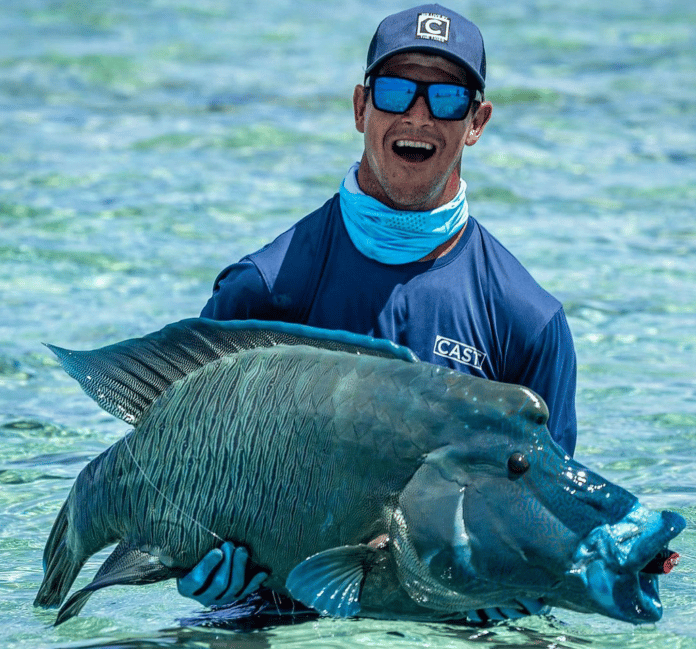We were lucky enough to make it to the premier of the Topwater film invitational, hosted on the Gold Coast by SCF and sponsored by BCF. After 4 hours of short films, to say that these films were good would be an understatement, but it got me thinking about what the future has in store for the fishing community and fishing content. Read on to get my thoughts!
How often have you heard someone ask for a photo of a fish, right after you tell them you caught one? A fish is only as good as the photo, right? As we approach the conclusion of 2022, I would even go as far to say that a fish is as only as good as a video. In the last decade, we have seen a stark development in what we can term as ‘fishing content’, with the standard, technology, and accessibility all rising. As a keen angler, communicator, and someone passionate about the industry doing well, I wanted to dig a little deeper and find out what exactly is considered as quality fishing content in this day and age.
Top water fishing invitational
This conversation all started after I attended the BCF Topwater Invitational hosted by SCF (Sustainable waterways,Clean Waterways & Future Generations). The revolutionary concept saw SCF send 10 content creators out to the Great Barrier Reef to create a 20-minute film – all of which were exclusively aired at a Gold Class Cinema in Southeast Queensland. As I left the cinema, I found myself speaking to fellow attendees, we were amazed at the diversity in content we had just witnessed. Despite the concept seemingly being straight forward, the event featured 10 rather different films each with their own spin on what a ‘topwater film’ should look like. Was some better than others? Well, that’s up to you. Did it create more questions than answers as to where we are heading in the world of fishing content? You betcha.
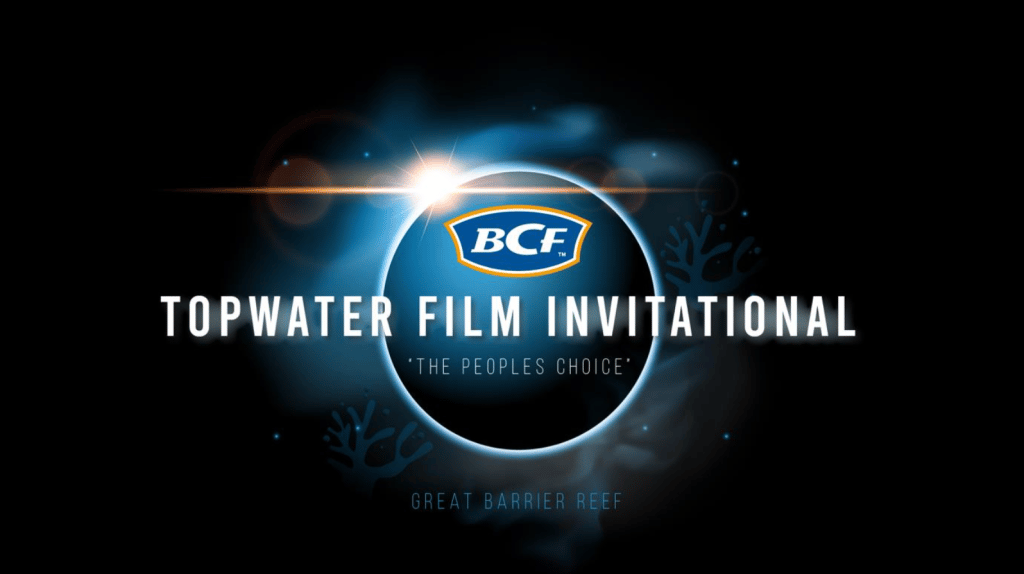
A brief history of fishing content
For me, the passion for fishing content started in print media – magazines, newspaper clippings and books. For decades, the currency of a good article was the quality of photo that featured throughout along with the words and visuals telling’s a story to the reader about the authors experience. Any true-blue Australian will resonate with the 1000-page book sitting in the old bookshelf of their grandfather’s home. Littered with diagrams, sketching’s and black and white photos throughout. For many, this is how they learnt new tips and tricks. In 2022, the question has to be asked as to whether print media is a dying art? I think it is. In the last 20 years we have seen a transition to online blogs and articles (much like this one). With technology now enabling us to insert videos, photos, and animations with ease. Sure the odd fishing magazine will still be sold (and as they should), will we see the type of uptake in this medium like we did in the 2000’s? I don’t think so.
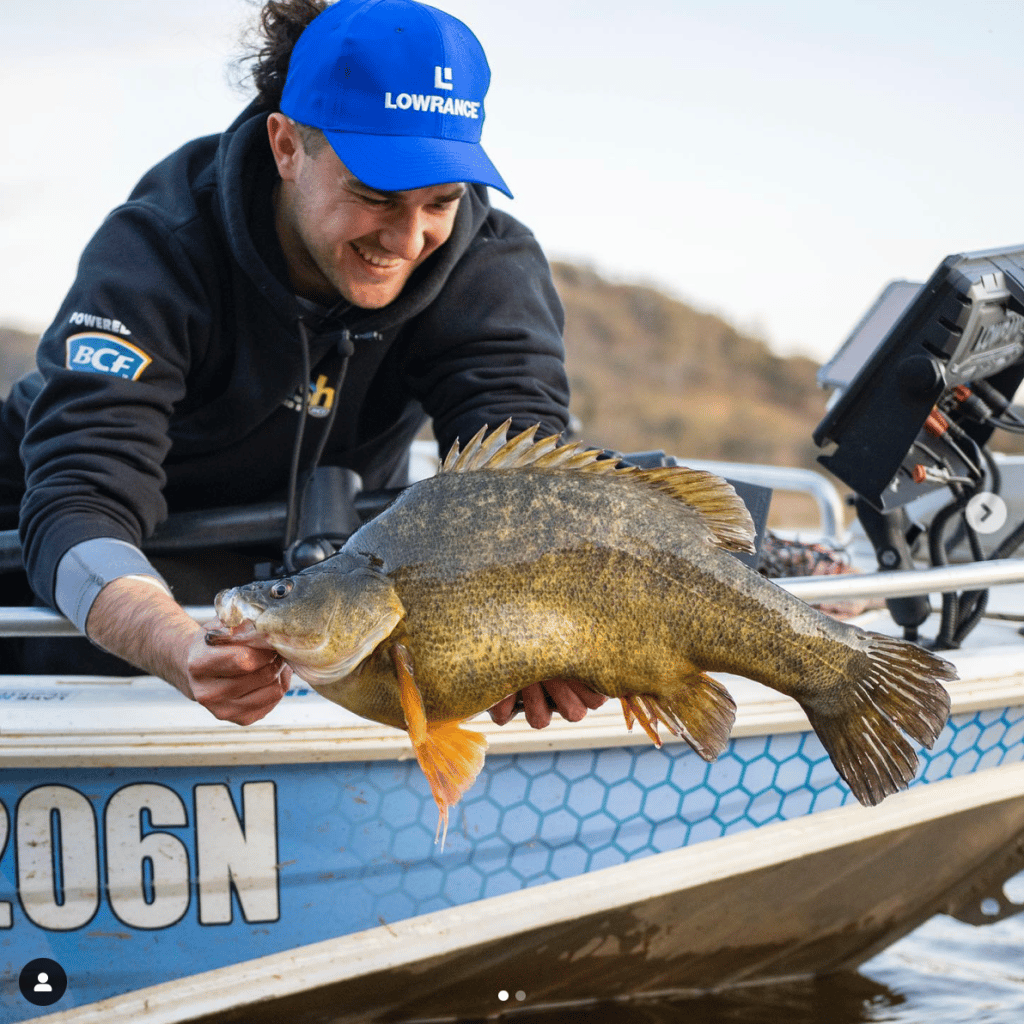
Print media in 2022
The demise of print media could very well be put down to the advancement in social media, website design and the internet that came at the turn of the decade. Whilst the topics, fish and authors didn’t change, the place anglers viewed this content did. Magazine front covers were swapped out for an Instagram photo, articles were turned into social media captions, and the authors name was prefaced with an @ symbol. Importantly, however, the need for a good photo didn’t change. If anything, the importance of getting that ‘cracking shot’ was more pronounced with the chance of going ‘viral’. Whilst many may have thought in 2010 that the ‘revolution’ was on its way, I think the storm was yet to come.
I recently got the chance to sit down with Steve ‘Starlo’ Starling to chat on this exact topic. Steve, in my view, is the pioneer of fishing content. Writing for 40 years on the topic, there aren’t many fish that haven’t made their way into the title of one of Steve’s articles. In the episode, Steve said – “I used to go fishing to get photos for my monthly article. Then I went fishing to get a photo for my Facebook. Now I go fishing to get a video for my YouTube. It seems, regardless of what I am doing, I am going fishing for proof that I actually did it!”.
Steve’s comment resonated with me. As 2000 soon turned into 2010, content didn’t change all that much, it was just the place you found it. Mobile phones had a lot to do with this, allowing for instant ‘capture and distribution’. Whilst many might say that the DSLR camera is no longer needed, I’m a firm believer that difference between a shot of your phone and a shot taken on a proper camera is chalk and cheese. If you just want to share it with your mates, then there is no problem. If you hold a genuine interest in creating quality content that can be used as marketing material, then the DSLR lives on.
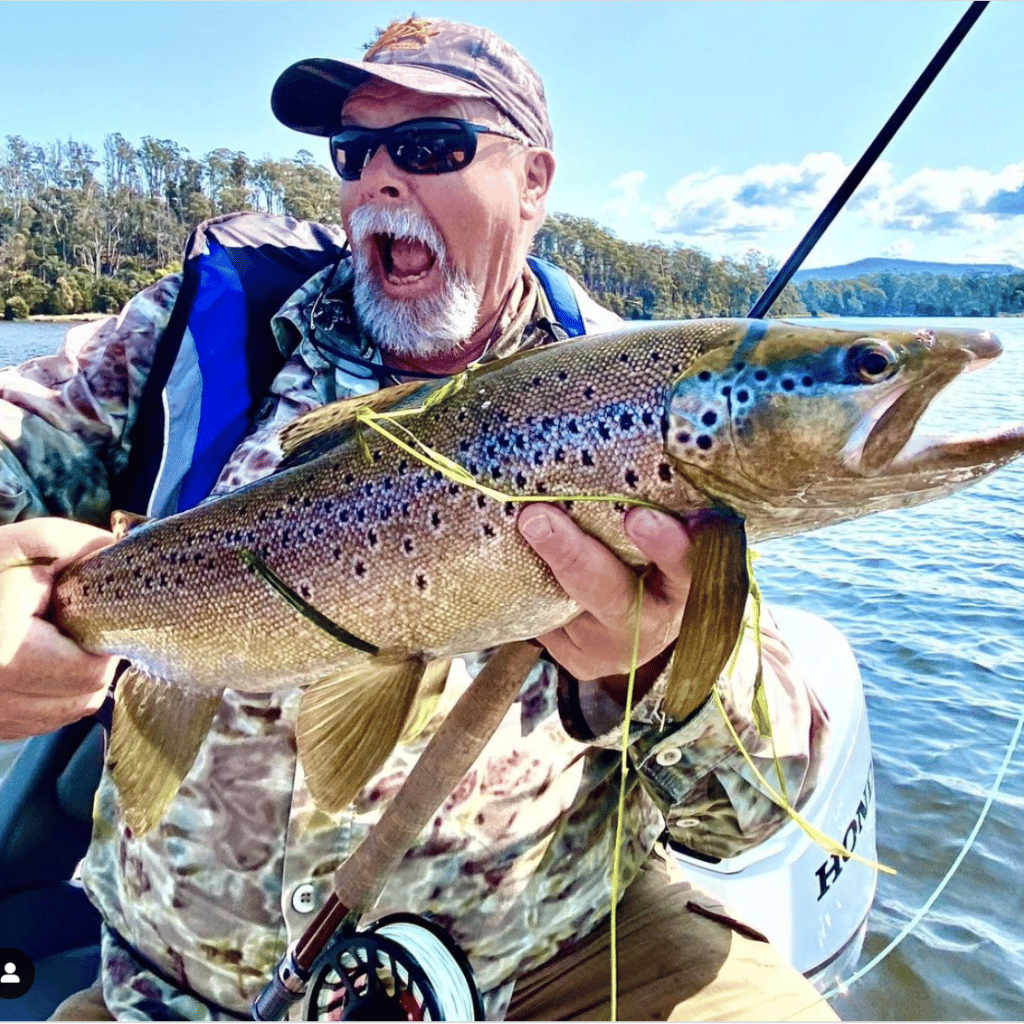
The Revolution
The true ‘revolution’ for me came when action camera’s became affordable, and YouTube became a ‘downloadable app’ on your smart phone – around the 2015 mark. This, in some respect, evened the playing field for who could consider themselves as a ‘fishing content creator’. Unlike Television (which we will get to) that required a production crew, Vlogging (the term given to this style of content) allowed a fisho to place 2-3 cameras around the boat and film every second of action that goes on. The beauty of this style of content was not in its production quality. If anything, that was far far lower. The beauty was that every man in his dog was doing it, and doing it every week of the year. The result? 52 videos going out every year, on 100 000 YouTube accounts… you do the maths.
In its fairness, Vlogging allowed fishos to develop an audience, connect with that audience on a weekly basis, whilst allowing them to interact with them on socials about what they liked and disliked. Imagine telling that to a magazine writer in 1998! It allowed swearing, jokes, informality, and authenticity to be a central part of the content and allowed viewers to feel as though they are right next to the fisho. Above all, however, it showed how much demand there is for fishing content in Australia as we turned the next decade, with multiple Youtube channels generating 50-100K views every week, consistently.
Education through content
Content in 2022 is a powerful tool. The ability for someone to speak directly to an audience and push their agenda is something that even politicians will be envious of. For many of the flagship Youtube Channels, we are talking in the millions. For me, this is the receipt for a brighter recreational fishing future. Messages around conservation, sustainability, mental health, mateship, and stewardship can all be subtly integrated into these films to pass onto the next generation. This was in fact one of the criteria for ‘bonus points’ in the BCF Topwater Invitational – that is, integrate messages of sustainable fishing for extra voting points.
For me, a lot of the teams missed the mark. I didn’t want to use the word ‘cop out’, but picking up used beer cans on the beach (ones that clearly were brought there by them) wasn’t what the concept was asking for. For me, this was a chance to address those real issues that we need to be talking about; habitat degradation, stewardship, climate change. Sure, picking up rubbish is important, but if we are going to call them ‘influencers’, we need as much ‘influence’ as we can get on the right issues.
Fishing shows
The one medium that throughout this time stood firm and confident (as if to say, ‘I’ll show you how to do it”), was Television fishing shows. You know the names: Guest, Worsteling, Rayner, Hillier, Berg, Starling, ET. For the last 15 years, these gentlemen have churned out 20-episode series’ on national TV channels with a consistent following. Aside from a few new camera angles, like Drones, fishing television is what I call the ‘gold’ of wall street; it’s safe, not going anywhere, and doesn’t disturb anyone else – it just does it’s thing. Having had the privilege of working alongside Michael Guest for the last decade on his national TV show Reel Action, I know the effort and time that goes into these productions, which is why I am more than happy to say that TV is not even close to be ‘dead’ until that quality is matched elsewhere.
So, what makes good fishing content?
As I walked away from the cinemas last weekend at the BCF Topwater Invitational, all these formats, platforms and ideas were running through my mind. For the most part, I knew what was coming; throughout the 10 films, each stage mentioned above was featured in some capacity; vlogging, TV Style, anecdotal story recounts. The point of differentiation amongst these films was the ability to capture the fish feeding in its natural state. Sure, everyone can talk on camera at that level, but the true way to draw someone in was to show (usually via drone) them something they haven’t seen before. If you haven’t seen a Giant Trevally hit a topwater lure from the surface of the water – go do yourself a favour….
Referendum
The one topwater film that captured my attention, however, was the film put together by CAST (Mick Guthrie, Ben Jones, Michael Wood and Flynn Cypher). It was nothing like anything I had seen before. In some respect, it broke every rule we have ever learnt as content creators. It had next to zero dialogue, it didn’t focus on the fisherman, it had hyper-transitions, it used metaphors through role-play, it didn’t show how they caught their fish, and it left you with more questions than answers.
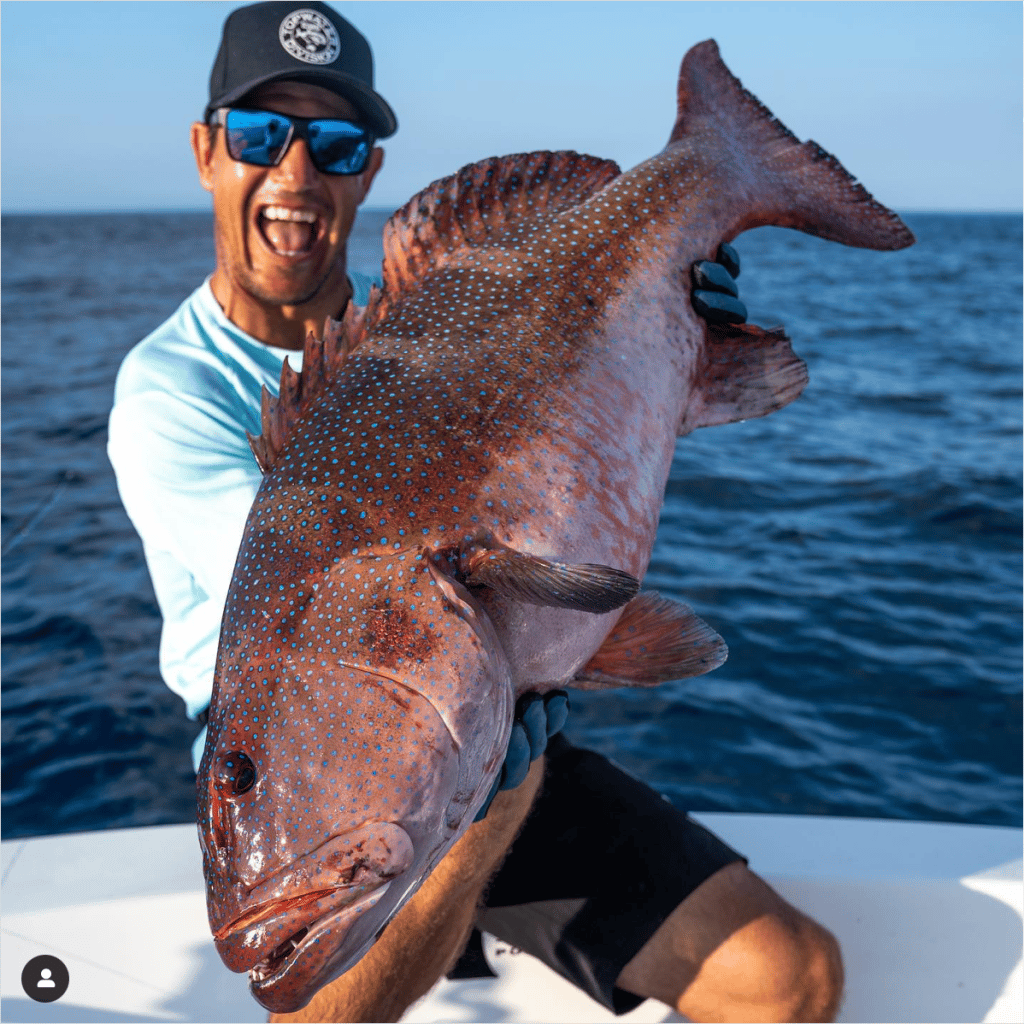
So why are people talking about it? Why did I want to watch it again?
If you haven’t seen it, I encourage you to download the BCF Topwater Invitational App and check it out. But for those who can’t spare the $25, here is an overview. The film opens with a vlog-style montage before seeing the main character seemingly drop dead in the ocean. This scene serves to acknowledge that something new is needed – a questioning of status quo.
Following this, the film follows an ‘awakening’ whereby the character’s consciousness is met with fast moving fishing content, with a lack of dialogue and identity given to the angler. Here, the film introduces a new, younger, character as if to represent the next generation of fishing content, or as Cast put it – ‘THE NEW BREED’. By this point all identity is stripped of the characters and the film rounds out its 20-minute time slot with a cinematic montage of topwater fishing action. The film is punctuated with black and white features and continually blurs shots, keeping the viewer unsure about what style (those mentioned above) of content they are watching.
Cast
Mick Guthrie and Michael Wood, co-creators of the topwater film, say that the film was a microcosm of how the content industry is going, and where we think it should go. We sat down with Mick & Michael and this is what they had to say.
“There are no rules in fishing, the unexpected can happen, that’s what is so fun about these adventures we go on, so why are there rules for fishing films?
- Why do we just watch content that we’ve seen time and time again and think that’s the peak of the experience.
- Why can’t it encourage you to look yourself in the mirror
- Why can’t it be blended with pop culture or be about something deeper.
- Why can’t it be intertwined with indigenous heritage that adds to the film and doesn’t just tick the box!”
“Changing things up is a great thing, it gets people talking and that’s what all good communities need, talking points & conversations.”
Mick Guthrie – Cast
“We have built our business using Social media platforms and over the last 10 years we’ve watched it turn from something amazing to a platform that encourages quick hits, less depth/substance and a thirst from content creators to satisfy “the algorithms” for “success”.
“I believe most people want to feel something, to have some meaning attached to everyday life. We made a film that you get more and more out of each time you watch it, digging a little deeper, putting things into context, giving it some thought. We are really proud of it and stoked with all the amazing conversations it has generated!”, said Guthrie.
“Those with platforms need to never take their voice for granted and understand there is an unwritten obligation to operate on a bigger, more positive purpose than themselves” said Wood.
The fishing community
The online world of social media was quick to address the film, with mixed opinions. On one side of the debate was the group of traditionalists that just wanted to see fish and be taught how to do it. On the other side, was the group of people who understood the underlying message and appreciated the concept as a short film. As I trolled through social media comments, the consensus was that you either loved it, or hated it.
For me, I think this film, aptly titled ‘Referendum’, started a conversation that had been brewing for a long time. It questioned what we know and made one ask– this is the future of fishing content? Is the combination of production quality and story-telling the receipt for what constitutes as a ‘filming film’.
What is needed
In addressing this question, I caught up with Dom Thornely Managing Director of Inside Edge Management and Business manager of Reel Action TV. Dom is of the opinion that the fishing industry is screaming out for someone who can piece together top-class content that can be used and leveraged into the commercial sector.
“The game is definitely changing, no longer are simple GoPro clips and head mounts cutting it for the commercial market. Brands are looking for content that can shift the paradigm and move forward. Fishing is a wonderful vehicle to challenge the status quo and provide a path forward. I look forward to seeing the day when some of our amazing content creators produce material for companies outside our industry”.
Having worked on a national fishing TV series I can appreciate the skill required to capture the moment, tell the story and provide education to an audience. This content can work on a number of fronts for all stakeholders. The skill behind the camera and in the edit suite is where the ‘magic’ happens, it determines the success of the content.
The last cast
“It’s great that these conversations are now regularly happening in the fishing industry, the challenge to improve what we have and continue to raise the bar. The visuals that the waterways, oceans, and fish provide are like no other activity, the anticipation of what will happen next. That’s the sweet spot.”
As we approach 2023, we approach a juncture in where we are going as a community (or industry if you will), and I will watch on with interest as to what the next 12 months looks like. For me, Cast have showed what can be done in terms of producing something ‘different’ and started a conversation in the community about whether this is way of the future. For now, you be the judge – but when we have this conversation again in 12 months’ time, I think the conversation will be very different…
If you haven’t had a chance to check out ‘Referendum’ or the other nine short films, head on over to TFI to download the app.
You may also like:

